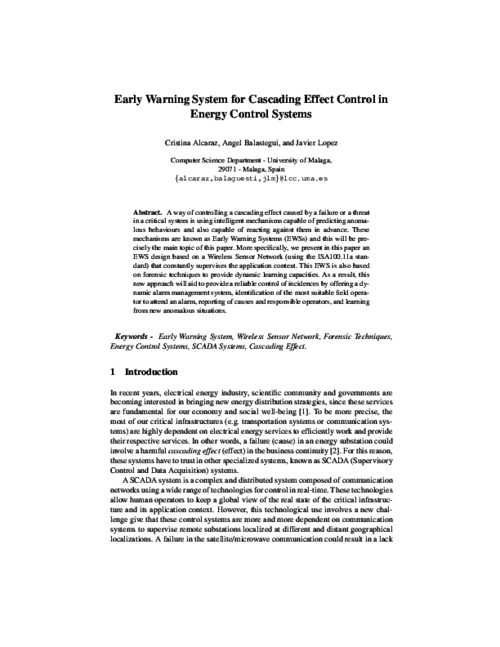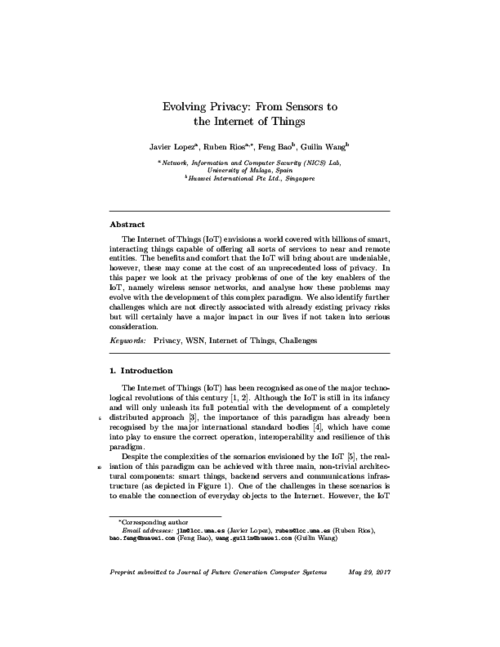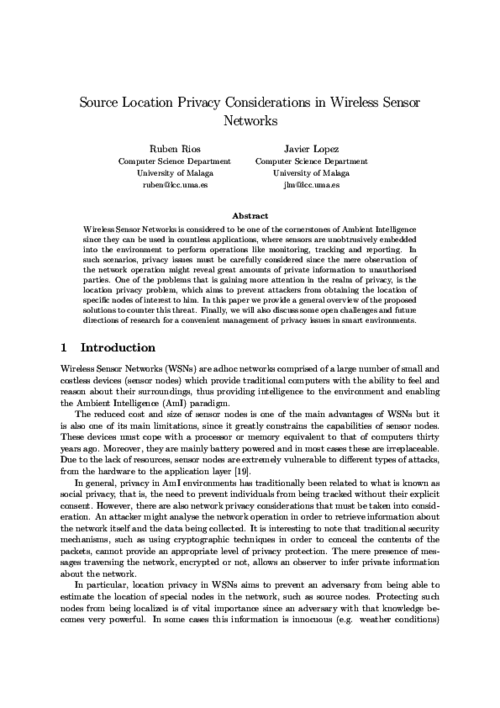 ] Type Year
] Type Year Digital Home Networking, R. Carbou, E. Exposito, R. Roman, and M. Diaz Eds., no. 7130, John Wiley & Sons Inc., pp. 60-96, 2011.
5th International conference on Critical Information Infrastructures Security (CRITIS’10), LNCS 6712, Springer, pp. 55-67, September, 2010.
Abstract
A way of controlling a cascading effect caused by a failure or a threat in a critical system is using intelligent mechanisms capable of predicting anomalous behaviours and also capable of reacting against them in advance. These mechanisms are known as Early Warning Systems (EWS) and this will be precisely the main topic of this paper. Specially, we present an EWS design based on a Wireless Sensor Network (using the ISA100.11a standard) that constantly supervise the application context. This EWS is also based on forensic techniques to provide dynamic learning capacities. As a result, this new approach will aid to provide a reliable control of incidences by offering a dynamic alarm management, identification of the most suitable field operator to attend an alarm, reporting of causes and responsible operators, and learning from new anomalous situations.

Future Generation Computer Systems, vol. 75, Elsevier, pp. 46–57, 10/2017. DOI
Abstract
The Internet of Things (IoT) envisions a world covered with billions of smart, interacting things capable of offering all sorts of services to near and remote entities. The benefits and comfort that the IoT will bring about are undeniable, however, these may come at the cost of an unprecedented loss of privacy. In this paper we look at the privacy problems of one of the key enablers of the IoT, namely wireless sensor networks, and analyse how these problems may evolve with the development of this complex paradigm. We also identify further challenges which are not directly associated with already existing privacy risks but will certainly have a major impact in our lives if not taken into serious consideration.

4th International Symposium of Ubiquitous Computing and Ambient Intelligence (UCAmI’10), L. Fuentes, N. Gámez, and J. Bravo Eds., IBERGARCETA PUBLICACIONES, S.L., pp. 29 - 38, Sept., 2010.
Abstract
Wireless Sensor Networks are considered to be one of the cornerstones of Ambient Intelligence since they can be used in countless applications, where sensors are unobtrusively embedded into the environment to perform operations like monitoring, tracking and reporting. In such scenarios, privacy issues must be carefully considered since the mere observation of the network operation might reveal great amounts of private information to unauthorised parties. One of the problems that is gaining more attention in the realm of privacy, is the location privacy problem, which aims to prevent an attacker from obtaining the location of specific nodes of interest to him. In this paper we provide a general overview of the proposed solutions to counter this threat. Finally, we will also discuss some open challenges and future directions of research for a convenient management of privacy issues in smart environments.
